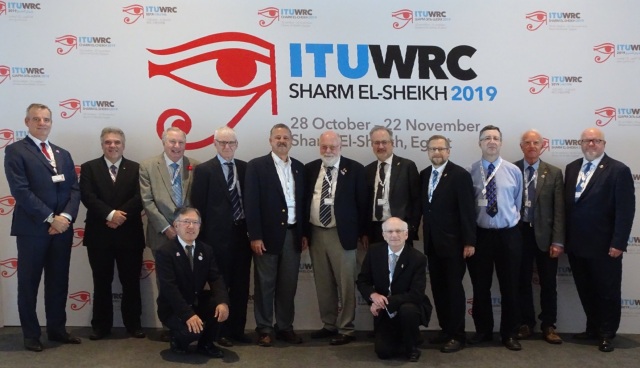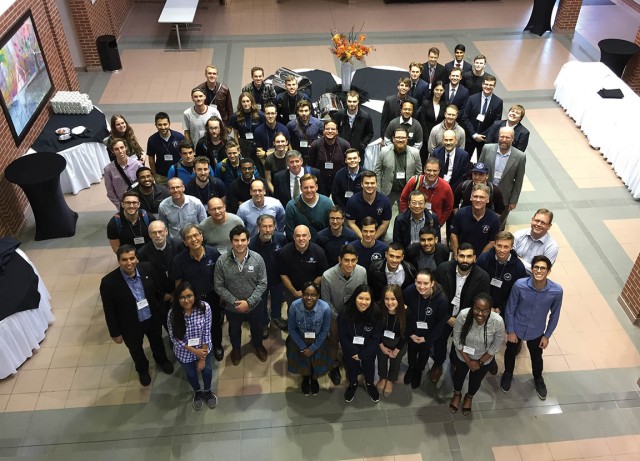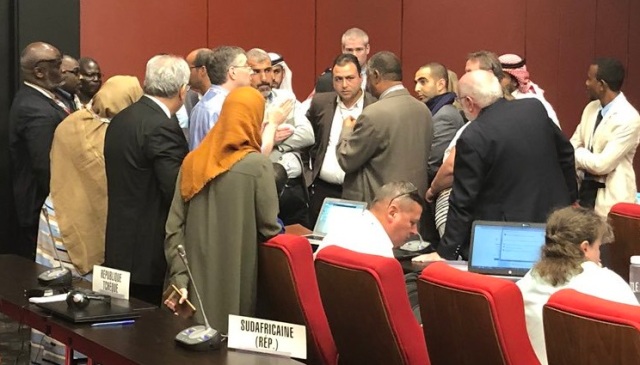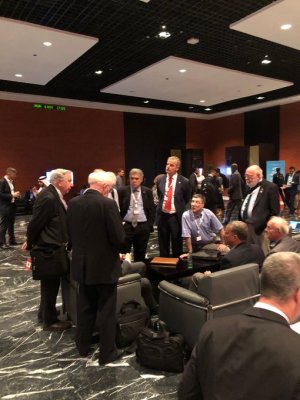IARU update regarding Amateur Satellite allocations
The second week of the World Radiocommunication Conference reports on the status of two issues affecting the amateur satellite service.
In a report written by Dave Sumner, K1ZZ, first is an agenda item currently under review during this WRC-19 session; second is planning for future pressure on frequencies for the amateur satellite service.
Current WRC-19
While it does not directly affect us – work at WRC-15 saw to that – we are following an agenda item that seeks spectrum for telemetry, tracking and command in the space operation service for non-GSO satellites with short duration missions (CubeSats, among others).
We would like a solution to be found to cut down on the misuse of the very limited amateur-satellite spectrum for commercial applications. Discussions are focusing on spectrum near 137 MHz (down) / 149 MHz (up) but reaching agreement is proving to be very difficult.
Future – WRC-23
With the spectrum from 8.3 kHz to 275 GHz fully allocated and some bands above 275 GHz already identified for particular uses, any proposal for new allocations involves sharing with one or more incumbent services.
The pressures for spectrum access to accommodate new uses for commercial purposes are intense; for an established service such as ours, any WRC that does not reduce our own useful spectrum access is a success.
The idea of including the amateur two meter band in a study of non-safety aeronautical mobile service applications has not resurfaced. However, the IARU is concerned with a proposed item for WRC-23 entitled: “Review of the amateur service and the amateur-satellite service allocations to ensure the protection of the radionavigation-satellite service (space-to-Earth) in the frequency band 1240-1300 MHz.”
Our regulatory status is already clear. The amateur service is secondary in this band and the amateur-satellite service is permitted to operate in the Earth-to-space direction on a non-interference basis in the band 1260-1270 MHz. In the international Radio Regulations this is all the protection a primary service such as radionavigation-satellite requires; implementation is up to individual administrations.
The one well-documented case of interference to a Galileo receiver that prompted this proposed agenda item occurred more than five years ago and was quickly resolved by the administration concerned. There have been no known interference cases to user terminals.
An amateur service allocation of 1215-1300 MHz was made on a primary, exclusive basis in 1947, later downgraded to secondary to accommodate radiolocation (radar) and narrowed to 1240-1300 MHz. The radionavigation-satellite service was added in 2000. As a secondary service amateur radio has operated successfully in the band for many years.Given the relatively modest density and numbers of amateur transmissions in the band, we view the Galileo-oriented proposal for an agenda item as disproportionate.
The IARU recognizes the concern and does not want the amateur service to affect the operation of the Galileo system in any way. It has already updated its operational recommendations for amateur stations in Region 1. If necessary, further recommendations may be developed and rolled out globally.
In CEPT, two preliminary measurement studies of Galileo receiver performance/vulnerability (from 2015 and 2019) are currently being evaluated. Discussions can be more timely and focused within CEPT.
The IARU believes that this process already offers the potential for a satisfactory solution and thus the issue does not warrant WRC action and the commitment of ITU resources.
Source: http://www.iaru.org/news–events
Read the RSGB WRC-19 updates at https://rsgb.org/main/blog/category/news/special-focus/wrc-19/
Get The Details…
m5aka AMSAT-UK
Powered by WPeMatico







 The 3rd PocketQube Satellite Workshop, hosted by
The 3rd PocketQube Satellite Workshop, hosted by 